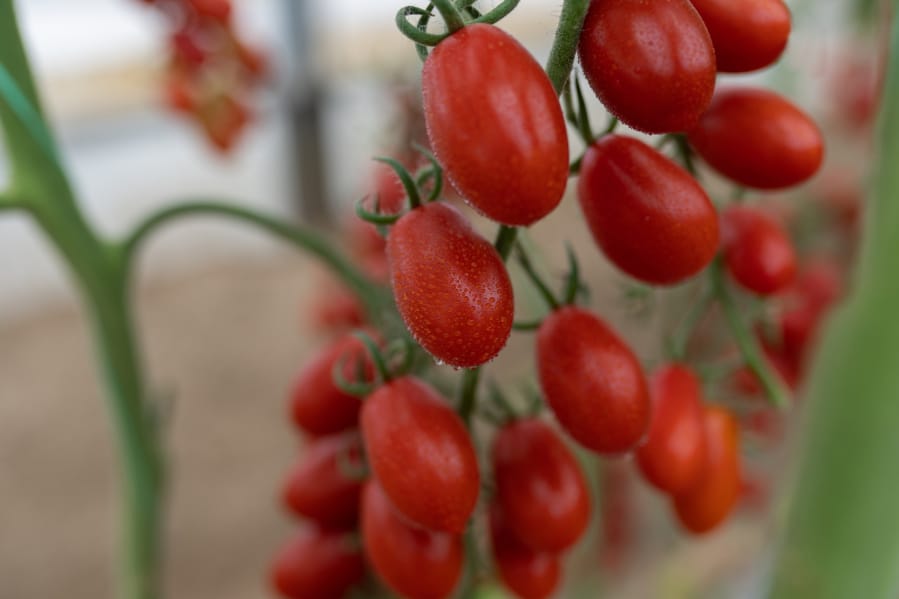Tomatoes sit right on the edge: sauce, salsas and soups … low-acid or high-acid foods?
Tomatoes come in all sizes, shapes, colors and flavors. There are green tomatoes, cherry tomatoes, grape tomatoes, tomatillos and more. We love to eat them fresh during the season but they are great preserved for use during the winter in soups, stews, and sauces. Many of them have been developed to be low-acid, which is great for fresh eating. However, if you plan to preserve them as salsas, tomato juice, or just canned tomatoes for soups and stews, more caution needs to be taken.
One of my goals in becoming a WSU master food preserver was to learn safe ways to preserve foods. In doing so, I discovered that canning tomatoes and tomato products is not as straightforward as one would think. In the mid-1980s there were many cases of food-borne illness related to home-preserved tomato products. Research found that it was due to the lack of enough acid found in the tomatoes to be safely preserved without some changes in preservation methods. Foods high in acid can be safely preserved in a boiling water bath canner, while lower-acid foods (vegetables, meat, fish and poultry) need to be preserved in a pressure canner. Tomatoes over the years have become lower in acid due to growing and soil conditions, as well as development of lower-acid varieties.
When considering preserving tomatoes first think about what you plan to do with them when you open the jar. If for soups, stews and sauces, preserve them on their own without any added vegetables like onions and peppers. Tomatoes waver on the edge of low-acid foods and high-acid foods, which is split by the pH value of 4.6. If recipes are all tomatoes, then you can process them via a hot water bath, and must add lemon juice or citric acid to each jar to make sure acid content is high enough to process in a boiling water bath canner. This keeps you in the safety zone with that extra bit of acid to assure that you are at the correct acid level. Following approved (and tested) recipes is a must! That way you won’t cross over the threshold with your investment in food, equipment, etc. For specific recipes and procedures, refer to PNW300 Canning Tomatoes and Tomato Products that can be found here: https://s3.wp.wsu.edu/uploads/sites/2079/2018/09/PNW300.pdf.
When you choose recipes that combine tomatoes with other low-acid foods, i.e. onion, garlic, fresh herbs, cilantro, peppers (of all sorts), you have to follow a researched, safe recipe very closely, including the processing procedures. If not, you can inadvertently allow the botulism bacteria, which produces deadly toxin, to flourish. When you add low-acid vegetables the anticipated acidity changes, which lowers the pH level. If you have a favorite salsa or tomato mixture recipe, please check it with the researched recipes before you preserve it. If you really want to make your aunt’s favorite salsa and it doesn’t match, then you must freeze it. The good news is that the publication PNW395 Salsa Recipes for Canning helps you sort that out with an awesome chart that specifies what you can or can’t adjust. You can find the publication here: https://s3.wp.wsu.edu/uploads/sites/2079/2014/04/PNW395.pdf. By following it, you can be assured you haven’t allowed botulism to sneak into your food. Unfortunately, botulism isn’t going to always be obvious, but can be life-threatening. So it’s not worth the risk to adjust recipes without following these guidelines.



